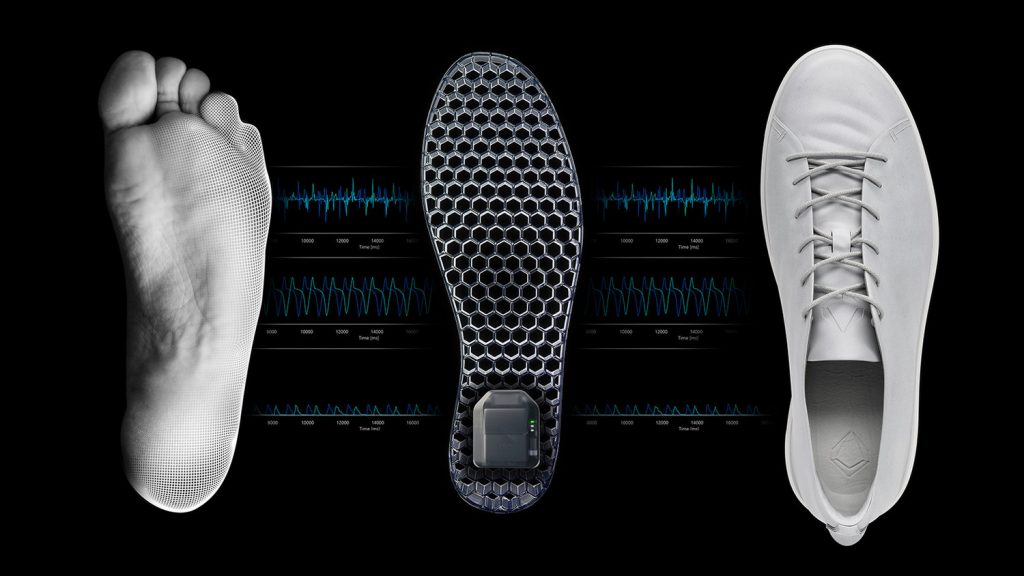The big story in today’s 3D Printing News Briefs is the postponing of the Materialise World Summit. Then we’ll finish with a little business news, as 3D PRINT UK is moving to expanded premises. Finally, starting this week, you can get QUANT-U’s 3D printed silicone midsoles at ECCO’s flagship Zürich store for a limited time.
Materialise World Summit Postponed
![]() Every two years, Materialise holds its Materialise World Summit (MWS) in Brussels, Belgium, gathering together the industry’s thought leaders and decision makers so they can share ideas about the additive manufacturing industry. This event typically takes place in the spring, which was the original plan for this year’s MWS…but not anymore. MWS 2020, originally scheduled for May 14-15, has been postponed, due to, as the company’s Kristof Sehmke tells us, “the coronavirus and its impact on international traffic.”
Every two years, Materialise holds its Materialise World Summit (MWS) in Brussels, Belgium, gathering together the industry’s thought leaders and decision makers so they can share ideas about the additive manufacturing industry. This event typically takes place in the spring, which was the original plan for this year’s MWS…but not anymore. MWS 2020, originally scheduled for May 14-15, has been postponed, due to, as the company’s Kristof Sehmke tells us, “the coronavirus and its impact on international traffic.”
MWS 2020 will now take place November 5-6, which makes it a busy month considering that will just one week before formnext in Germany. This isn’t the only major industry event that’s had to change its plans due to the COVID-19 outbreak – JEC World, originally scheduled for last week, has been pushed back to May, and after several big companies originally planning to attend the upcoming SXSW dropped out, including Apple, Facebook, Amazon Studios, TikTok, Intel, and Warner Music, the Texas-based conference was called off. With California Governor Gavin Newsome declaring a state of emergency in California over the coronavirus, should we all cancel our plans for RAPID + TCT next month? Time will only tell.
3D PRINT UK Moves to Bigger Facility
 Moving on to some better news, 3DPRINTUK has just finished the move to its new purpose-designed facility in North London’s Leyton Industrial Village. The service provider of polymer SLS 3D printing solutions for manufacturing applications was seeing increased demand for low volume production, and determined that a move was needed to accommodate the company’s current, and future, plans for expansion. 3DPRINTUK’s new home is larger, with nearly 10,000 square feet of space, and was custom-designed to hold the company’s EOS polymer SLS 3D printers, as well as offer a space for post-processing operations and a break down room that’s sealed to avoid powder contamination.
Moving on to some better news, 3DPRINTUK has just finished the move to its new purpose-designed facility in North London’s Leyton Industrial Village. The service provider of polymer SLS 3D printing solutions for manufacturing applications was seeing increased demand for low volume production, and determined that a move was needed to accommodate the company’s current, and future, plans for expansion. 3DPRINTUK’s new home is larger, with nearly 10,000 square feet of space, and was custom-designed to hold the company’s EOS polymer SLS 3D printers, as well as offer a space for post-processing operations and a break down room that’s sealed to avoid powder contamination.
“At 3DPRINTUK we are able to work with our customers — and potential new customers — to illustrate when and why the SLS process will work for them. But we are not afraid to tell them when it won’t, either. This is really important to us, and something the industry at large is not very good at confronting,” stated Nick Allen, 3DPRINTUK’s Founder and Managing Director. “I think this approach has contributed to our growth, which has been organic year on year, and the new premises are testament to that. We are still settling in, but the printers have been working non-stop since we got here and we are looking to further expand our capacity in the near future.”
QUANT-U’s In-store Experience at ECCO
 In 2018, the Innovation Lab at Danish heritage footwear brand and manufacturer ECCO introduced an experimental footwear customization project called QUANT-U, which uses real-time analysis, data-driven design, and in-store 3D printing to create custom, personalized midsoles out of a heat cured two-component silicone in just two hours. The QUANT-U experience is now coming to ECCO’s flagship Zürich store as an exclusive pop-up event from now until April 15, with a “unique limited collection” available to both men and women, along with the full customization service.
In 2018, the Innovation Lab at Danish heritage footwear brand and manufacturer ECCO introduced an experimental footwear customization project called QUANT-U, which uses real-time analysis, data-driven design, and in-store 3D printing to create custom, personalized midsoles out of a heat cured two-component silicone in just two hours. The QUANT-U experience is now coming to ECCO’s flagship Zürich store as an exclusive pop-up event from now until April 15, with a “unique limited collection” available to both men and women, along with the full customization service.
The process is simple – 3D scanners determine your orthotic fit in 30 seconds, so your midsoles have the correct shoe size and arch height. Then, during a walking analysis, wearable sensors will create an accurate representation of how you move around. The anatomical scan and the sensor data will help QUANT-U build a unique digital footprint just for you, which leads to customized, 3D printed midsoles within two hours. You can use the cloud-based service to print your own midsoles from any location and have them shipped to you, but at the upcoming ECCO pop-up event, you can just pick them up in the store. Book your fitting now!
Discuss these stories and other 3D printing topics at 3DPrintBoard.com or share your thoughts in the Facebook comments below.
The post 3D Printing News Briefs: March 10, 2020 appeared first on 3DPrint.com | The Voice of 3D Printing / Additive Manufacturing.





